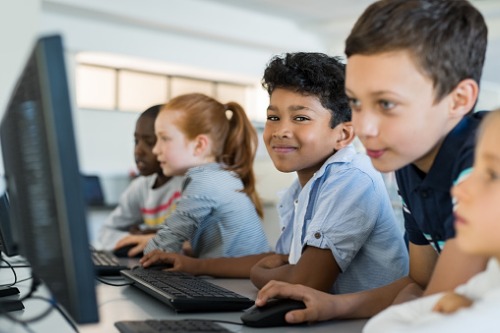
UNSW Sydney has transformed the learning experience for engineering students with an AI-infused and Teams-enriched solution while instituting reforms designed to reduce the risk of student dropouts.
UNSW Sydney is one of Australia’s leading universities with around 17,000 students enrolled in the engineering faculty. The large student cohort means that there can be 500 students enrolled in a class at any one time.
To optimise their learning opportunity and reduce the risk of drop out, Dr David Kellermann, a senior lecturer in the school of mechanical and manufacturing engineering, has developed and deployed Microsoft Teams to promote collaboration and communication. This has been augmented by artificial intelligence and rich data analytics.
In order to be able to respond to rising queries prompted by the enhanced student engagement encouraged by Teams, Dr Kellermann conceived Question bot – an AI infused chatbot that is able to answer student queries. It uses machine learning to build a body of knowledge that students can tap for support 24×7.
Since its launch, the University has noticed a staggering 900% increase in student posts and engagement.
Dr Kellermann said that at its simplest level, Question bot functions to “facilitate a problem of scale”, helping connect the right people together in a class of 500, and making sure that no question goes unanswered.
“It operates within the conversation between people, rather than the traditional human vs Chatbot experience. In a sense, the bot has a ‘seat at the table’,” Dr Kellermann told The Educator.
“On the next level, the bot leverages all he digital assets of the educational experience – we [as in my students and I] are co-creating and co-authoring conversations, video recordings, digital ink, calculations, lab results, and more.”
Dr Kellermann said the bot serves to surface those assets, and curate content from valuable conversations between groups of people in order to connect other people with like-minded queries.
“All the while it gathers data to help in generating original content from a different machine learning based system.”
Dr Kellermann said the second system is part of the tailored learning project – an effort in executing the goals of UNSW’s 2025 strategy.
“At scale, we can understand an incredible amount about our students’ learning experience by making better use of the information we already have or are unable to aggregate with traditional hub-and-spoke IT systems,” he said.
“With an integrated system, I’ve been able to accurately understand and predict student needs – including at-risk students – while it’s still early enough to act and give value.”
In identifying at risk students, Dr Kellermann’s machine learning model is trained with millions of data points that capture nuanced human characteristics.
“Ultimately, this allows me to reach out personally to those students, and in the same way that Question bot connects humans together, the ML system connects me to students in need,” he explained.
“This is a more humanistic approach to AI. We’re not trying to replace people, instead we aim to enrich human interaction to make learning personal again, even at a scale of 500+.”


